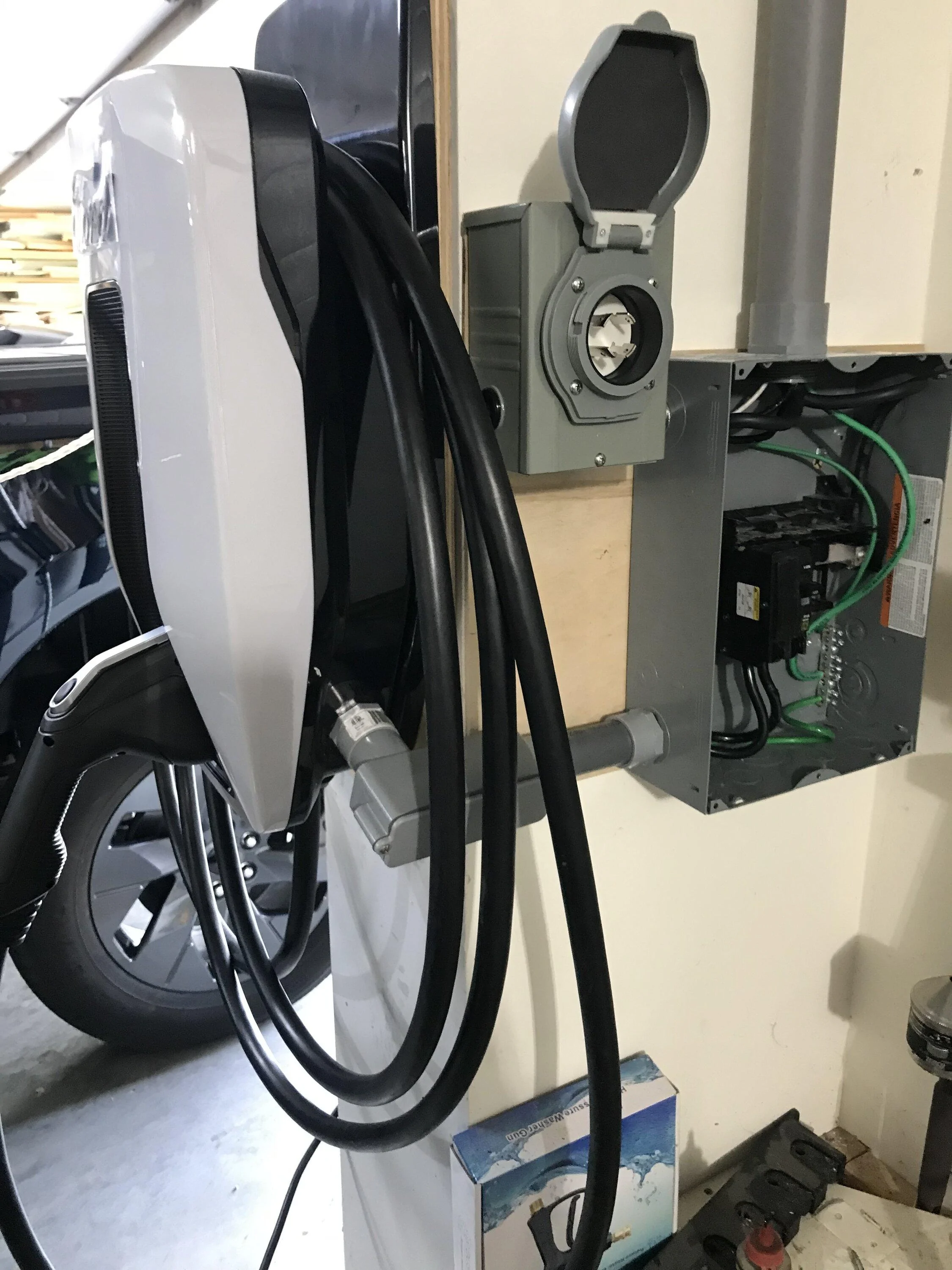chl
Well-known member
- First Name
- CHRIS
- Joined
- Dec 16, 2022
- Threads
- 7
- Messages
- 2,356
- Reaction score
- 1,450
- Location
- alexandria virginia
- Vehicles
- 2023 F-150 LIGHTNING, 2012 Nissan Leaf, 2015 Toyota Prius, 2000 HD 883 Sportster
- Occupation
- Patent Atty / Electrical Engineer
Just remember, if you are running the wire a long distance, you may want to use heavier wire, that is, over 100 feet. The issue is the voltage drop due to the wire resistance.
NEC recommends (not requires) no more than a 5% total voltage drop across feeders and branch circuits for optimal equipment performance.
"...If the NEC doesn't require you to size for voltage drop, why even think about it? Consider these reasons:
Instead of delivering 240V to your load (the EVSE), because of the resistance of the wire between the panel and the load, you will deliver 240V-voltage drop due to the wire assuming the 5% drop.
So a 5% voltage drop means 240v x 95% = 228V provided to the FCSP.
Ignoring the power losses in the charging equipment, that mean instead of 240V x 80A = 19.2kW
you will only deliver 228V x 80A = 18.24kW to the Lightning with a 5% voltage drop.
It will take a bit longer to charge the battery. Maybe that's not a big deal depending on your situation and not worth the additional cost of larger wire.
But you may run into local codes that make the wire size recommendation of the NEC a mandate. Best to look into that before installation. A professional electrician would if they do it right.
Besides distance, there are other factors that determine what wire size to use, both for optimum efficiency and safety, such as how many conductors in the conduit, the maximum ambient temperature, the material (copper or aluminum).
Consult a professional.
NEC recommends (not requires) no more than a 5% total voltage drop across feeders and branch circuits for optimal equipment performance.
"...If the NEC doesn't require you to size for voltage drop, why even think about it? Consider these reasons:
- System efficiency — If a circuit supports much of a load, a larger conductor will pay for itself many times over in energy savings alone.
- System performance — Lighting loads perform best when voltage drop is minimal. You get the light of a higher-wattage system simply by running larger wires.
- Troubleshooting — If you follow the NEC voltage drop recommendations, you don't have to guess whether your field measurements indicate a problem or if the voltage is low due to not accommodating voltage drop in the design.
- Load protection — Undervoltage for inductive loads can cause overheating, inefficiency, and a shorter life span of the equipment. When conductor resistance causes the voltage to drop below an acceptable point, increase the conductor size...."
Instead of delivering 240V to your load (the EVSE), because of the resistance of the wire between the panel and the load, you will deliver 240V-voltage drop due to the wire assuming the 5% drop.
So a 5% voltage drop means 240v x 95% = 228V provided to the FCSP.
Ignoring the power losses in the charging equipment, that mean instead of 240V x 80A = 19.2kW
you will only deliver 228V x 80A = 18.24kW to the Lightning with a 5% voltage drop.
It will take a bit longer to charge the battery. Maybe that's not a big deal depending on your situation and not worth the additional cost of larger wire.
But you may run into local codes that make the wire size recommendation of the NEC a mandate. Best to look into that before installation. A professional electrician would if they do it right.
Besides distance, there are other factors that determine what wire size to use, both for optimum efficiency and safety, such as how many conductors in the conduit, the maximum ambient temperature, the material (copper or aluminum).
Consult a professional.
Sponsored


